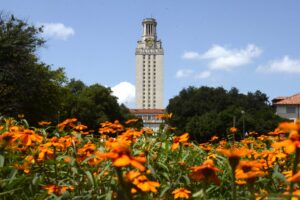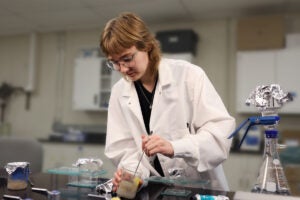Researchers at The University of Texas at Austin will work with the U.S. Department of Agriculture, Agricultural Research Service (USDA-ARS) to investigate biological control for an invasive cane grass that is choking waterways across North America.

The introduced European cane, Arundo donax, grows in dense stands in wetlands and riparian habitats.
Also known as Carrizo and giant cane, the grass is growing along extensive stretches of the Rio Grande in Texas and can be found along Austin waterways such as Shoal Creek. It grows up to 20 feet tall, uses large amounts of water and may crowd out other plant species and affect wildlife.
Dr. Larry Gilbert and his colleagues at the Brackenridge Field Laboratory (BFL) will study wasps that attack the cane under the direction of USDA research entomologists Drs. John Goolsby and Patrick Moran.
The wasps create growths called galls that could stress the plants and reduce their competitive advantage.
“The very basic biology of these wasps and how they interact with the plants is not known,” says Gilbert, director of BFL. “We’re just beginning to work it out.”
Gilbert’s team will be researching effective means for mass rearing the wasps and studying basics of the plant-wasp interaction inside a new greenhouse being completed at BFL.
The field lab is home to other biocontrol research–controlling imported fire ants using a small fly–and Gilbert says that experience has prepared the BFL researchers for their work investigating biocontrol of the giant cane, which has also invaded the station property.
The wasps are one of the many aspects of the cane’s biology and ecology being studied by the USDA’s Goolsby and Moran.



